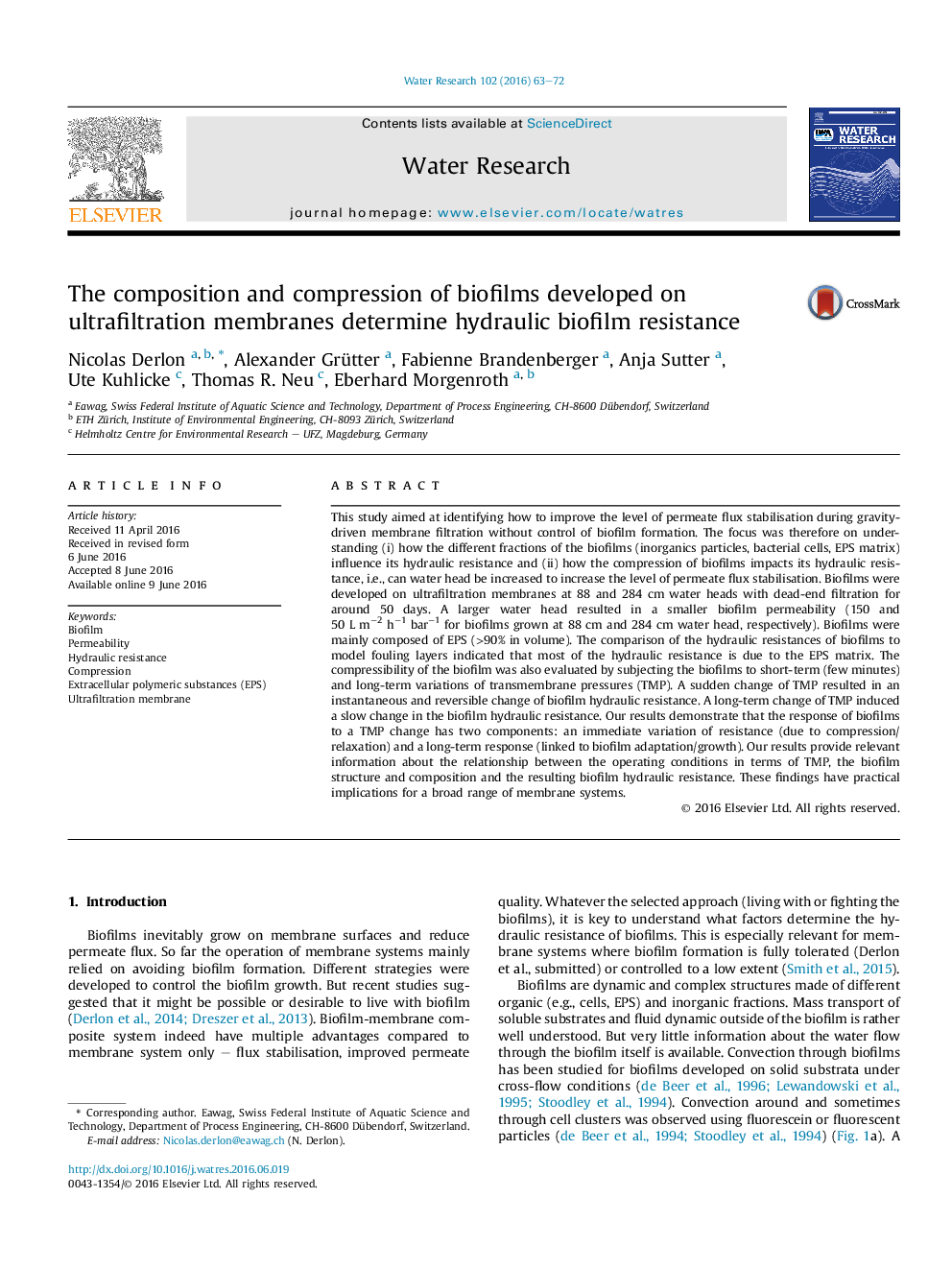| کد مقاله | کد نشریه | سال انتشار | مقاله انگلیسی | نسخه تمام متن |
|---|---|---|---|---|
| 4480839 | 1623066 | 2016 | 10 صفحه PDF | دانلود رایگان |
• We studied the hydraulic resistance and compressibility of biofilms on UF membranes.
• Biofilm internal structure and composition determines biofilm hydraulic resistance.
• Biofilm internal structure and composition is mainly influenced by the EPS matrix.
• Biofilms are compressible and deform under hydraulic stress.
• Increasing the trans-membrane pressure increases biofilm hydraulic resistance.
This study aimed at identifying how to improve the level of permeate flux stabilisation during gravity-driven membrane filtration without control of biofilm formation. The focus was therefore on understanding (i) how the different fractions of the biofilms (inorganics particles, bacterial cells, EPS matrix) influence its hydraulic resistance and (ii) how the compression of biofilms impacts its hydraulic resistance, i.e., can water head be increased to increase the level of permeate flux stabilisation. Biofilms were developed on ultrafiltration membranes at 88 and 284 cm water heads with dead-end filtration for around 50 days. A larger water head resulted in a smaller biofilm permeability (150 and 50 L m−2 h−1 bar−1 for biofilms grown at 88 cm and 284 cm water head, respectively). Biofilms were mainly composed of EPS (>90% in volume). The comparison of the hydraulic resistances of biofilms to model fouling layers indicated that most of the hydraulic resistance is due to the EPS matrix. The compressibility of the biofilm was also evaluated by subjecting the biofilms to short-term (few minutes) and long-term variations of transmembrane pressures (TMP). A sudden change of TMP resulted in an instantaneous and reversible change of biofilm hydraulic resistance. A long-term change of TMP induced a slow change in the biofilm hydraulic resistance. Our results demonstrate that the response of biofilms to a TMP change has two components: an immediate variation of resistance (due to compression/relaxation) and a long-term response (linked to biofilm adaptation/growth). Our results provide relevant information about the relationship between the operating conditions in terms of TMP, the biofilm structure and composition and the resulting biofilm hydraulic resistance. These findings have practical implications for a broad range of membrane systems.
Figure optionsDownload high-quality image (147 K)Download as PowerPoint slide
Journal: Water Research - Volume 102, 1 October 2016, Pages 63–72
